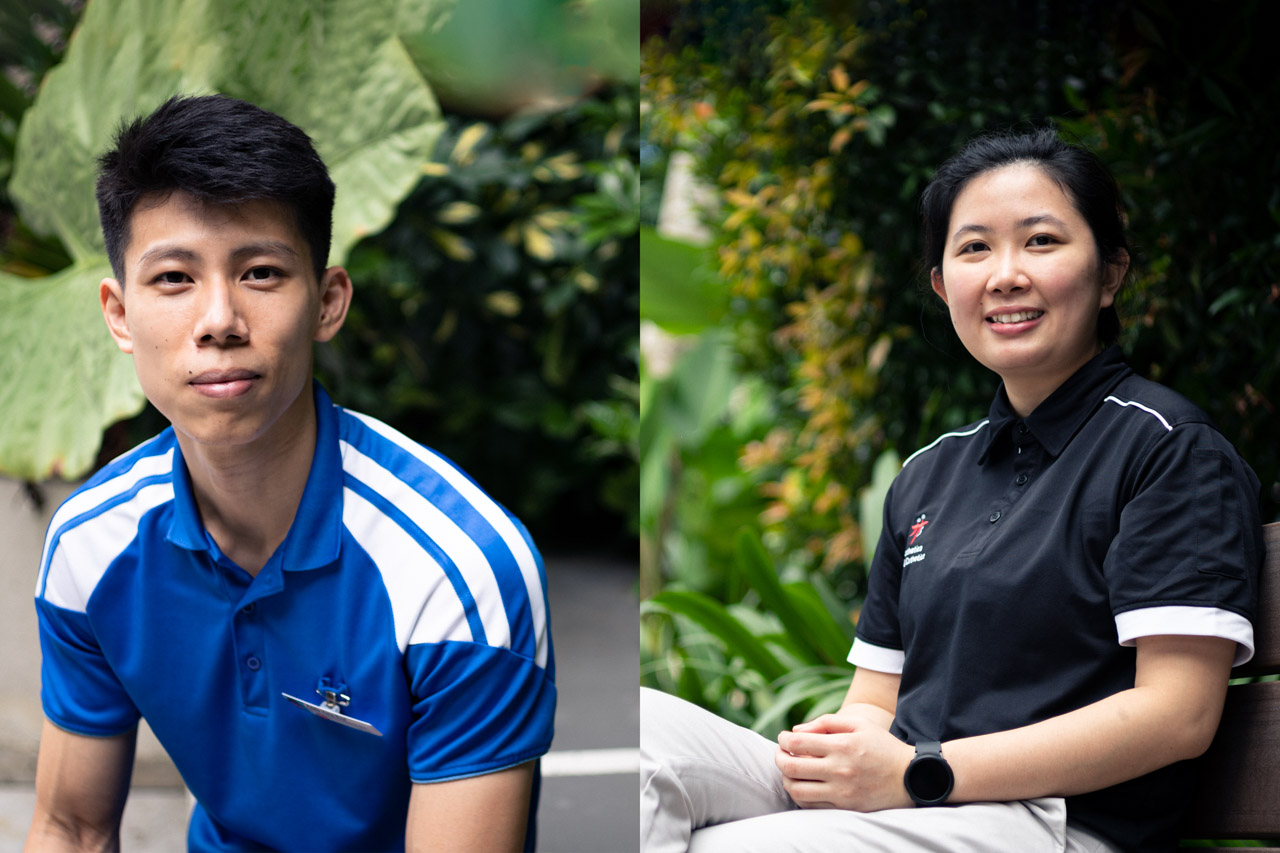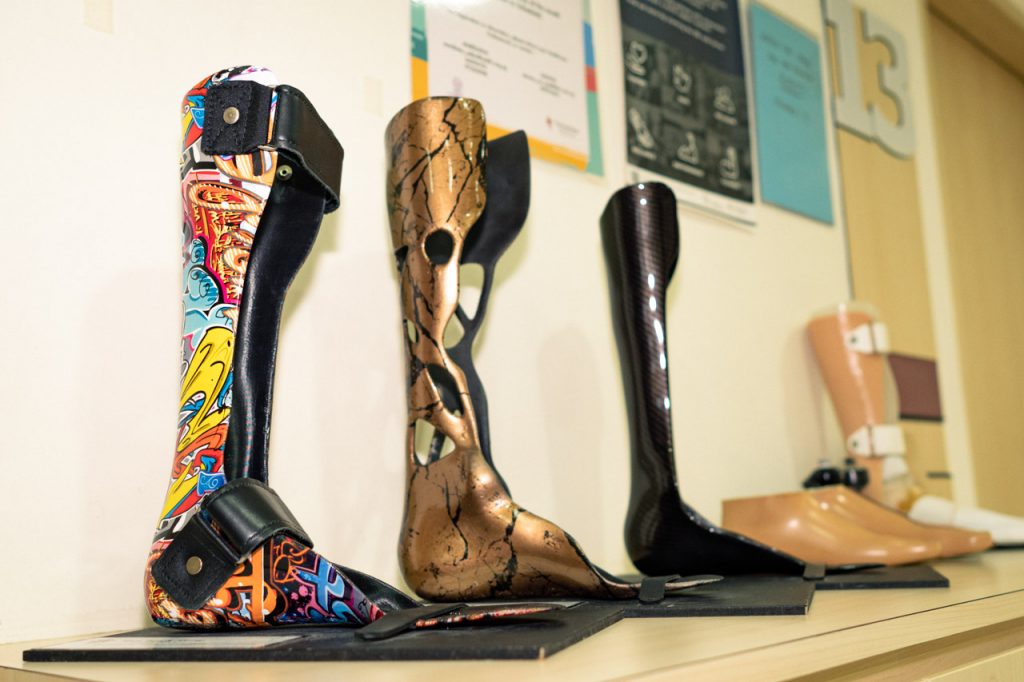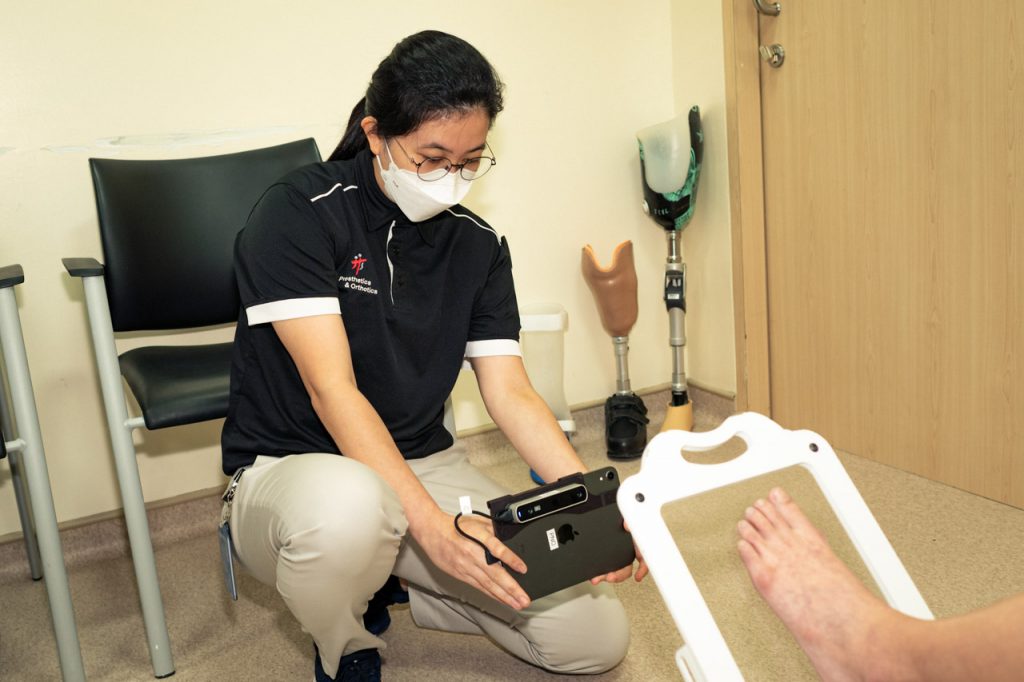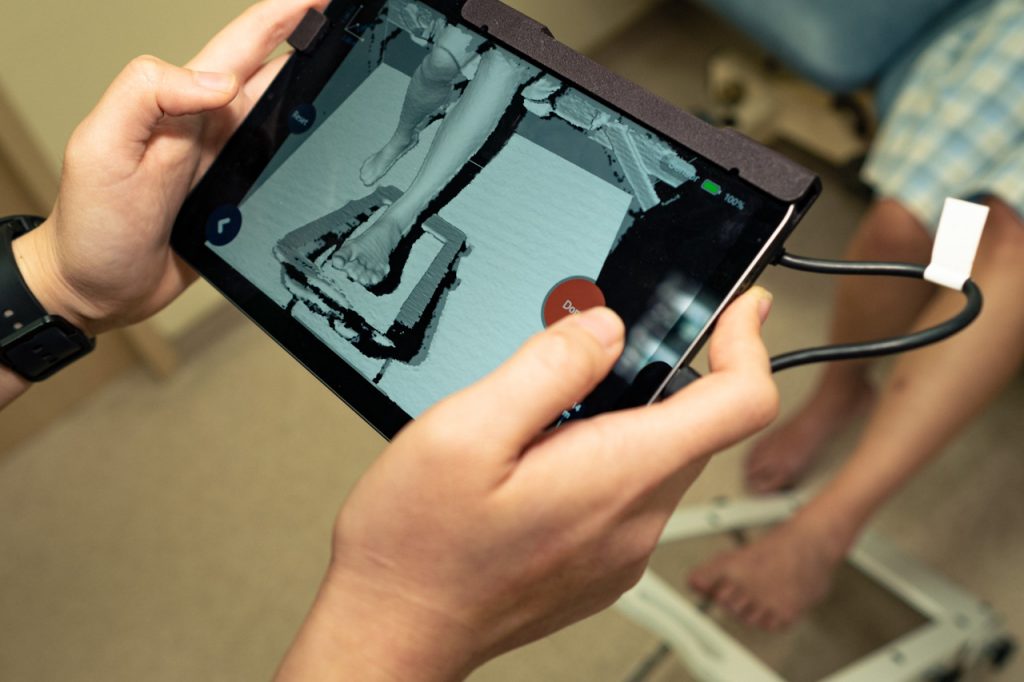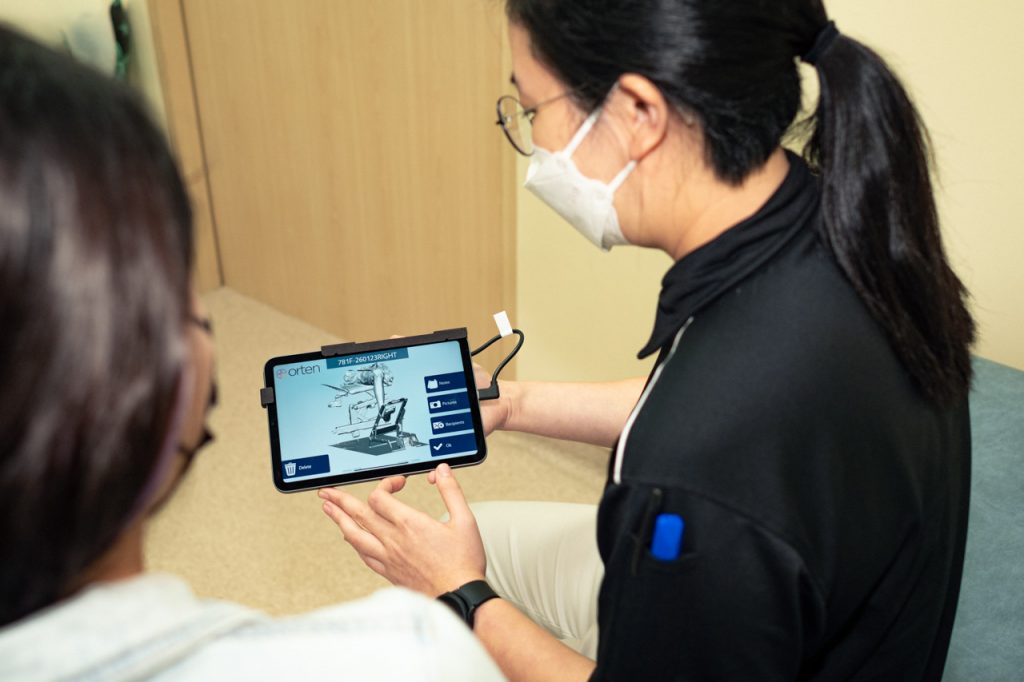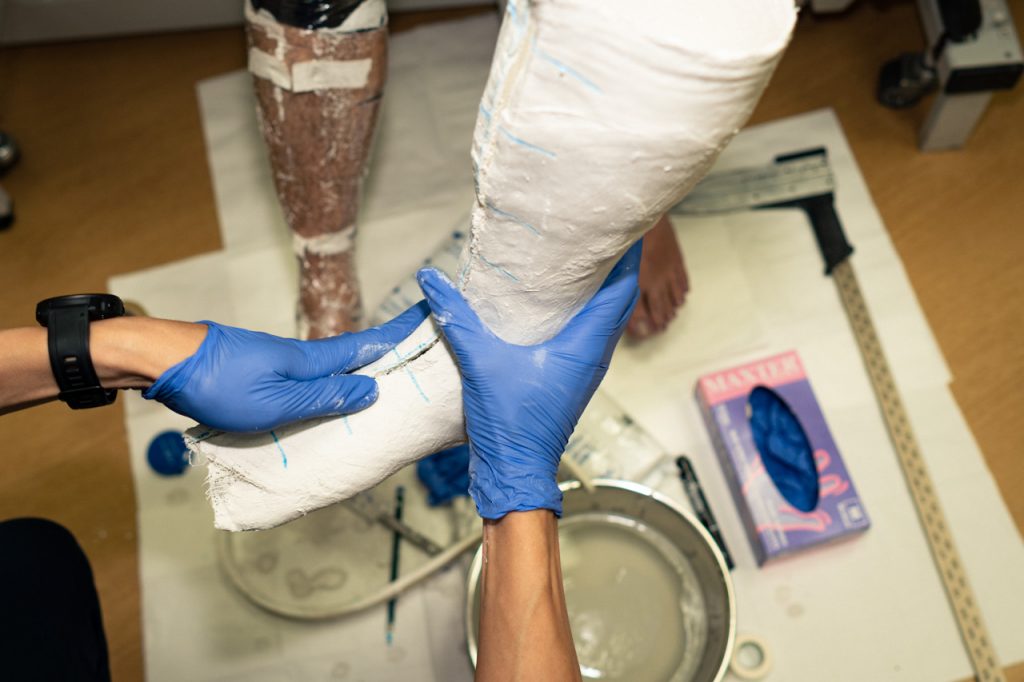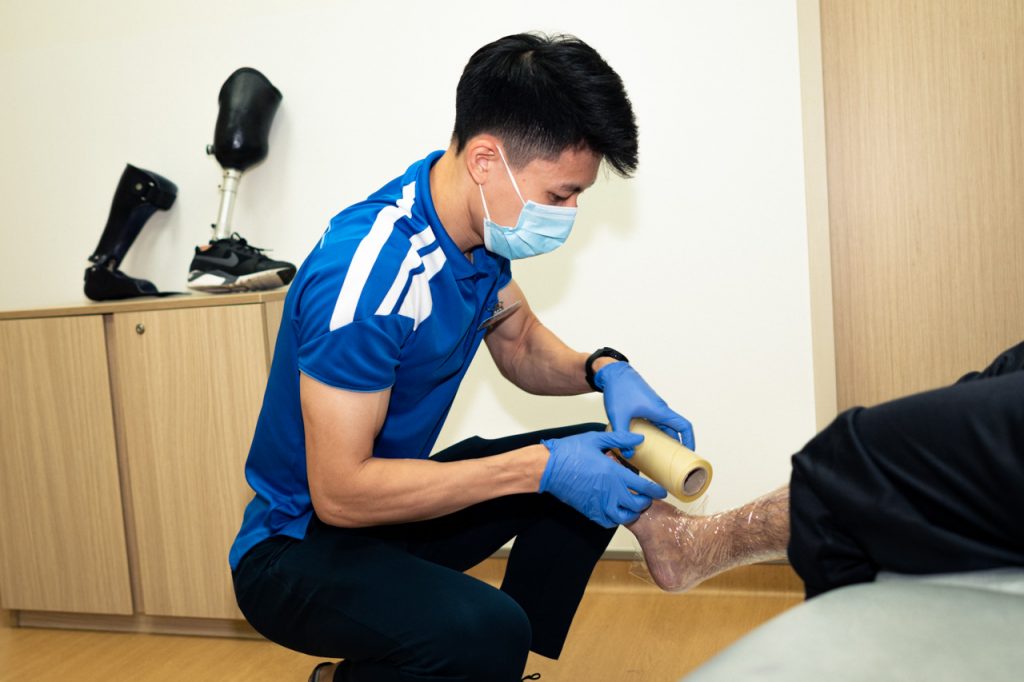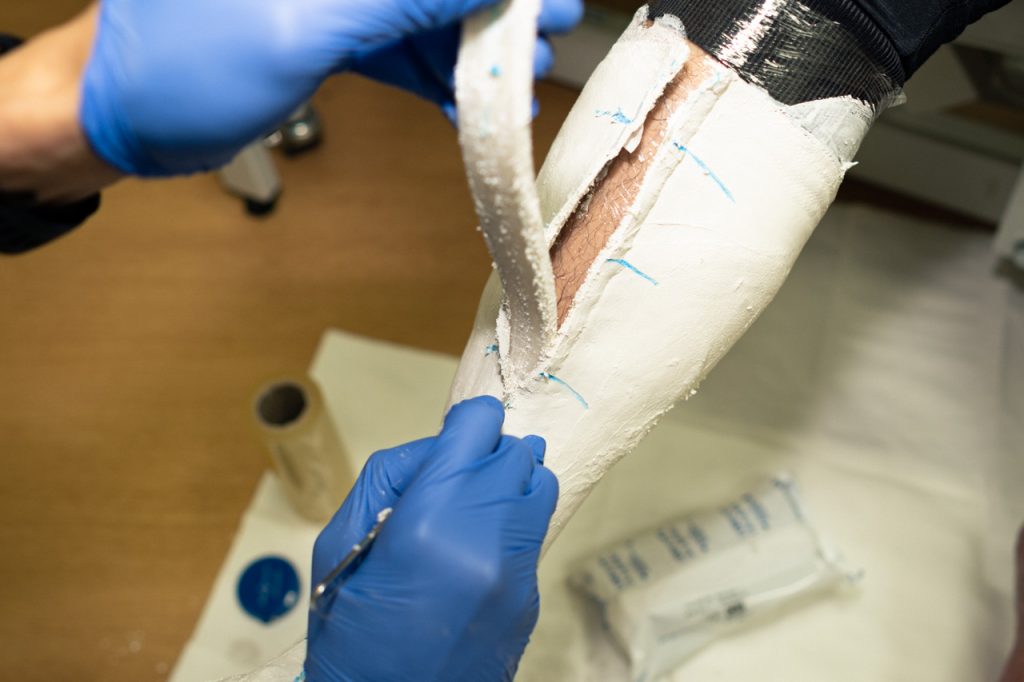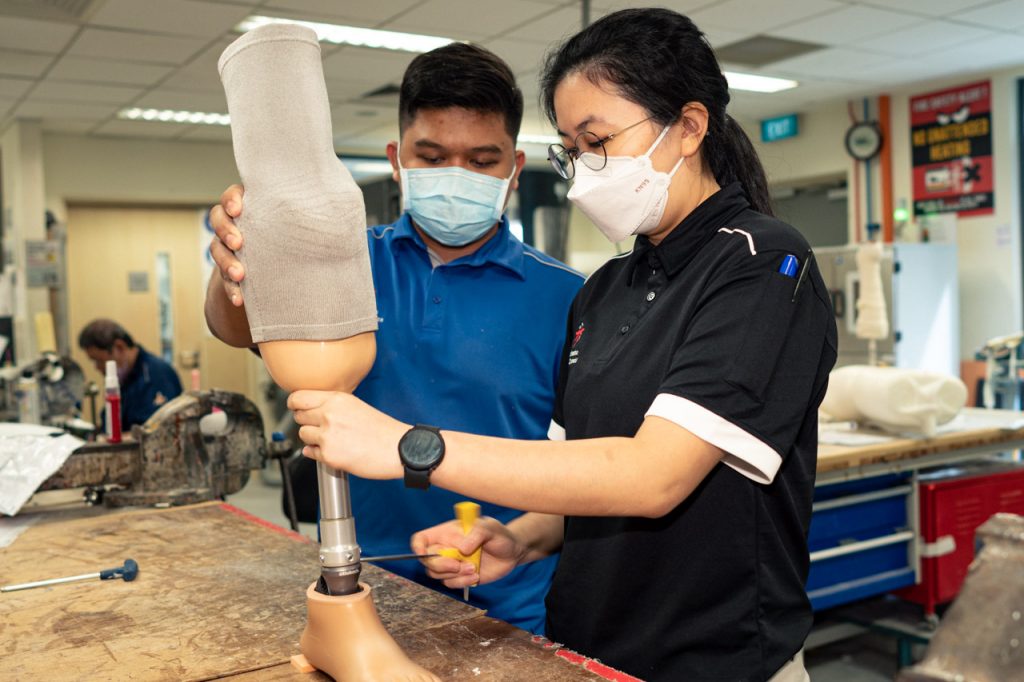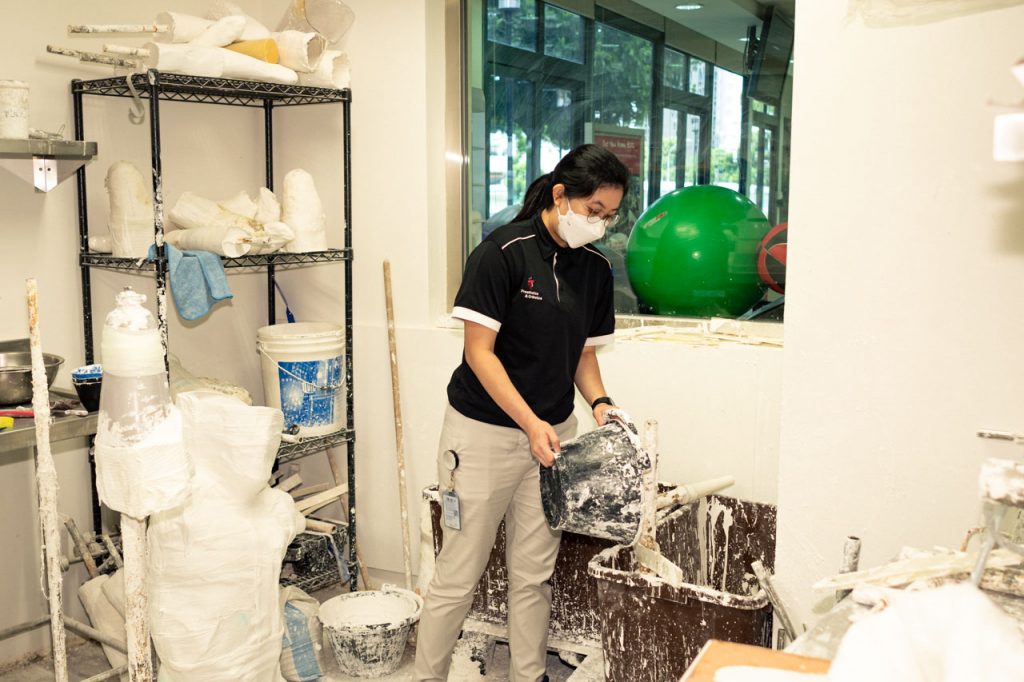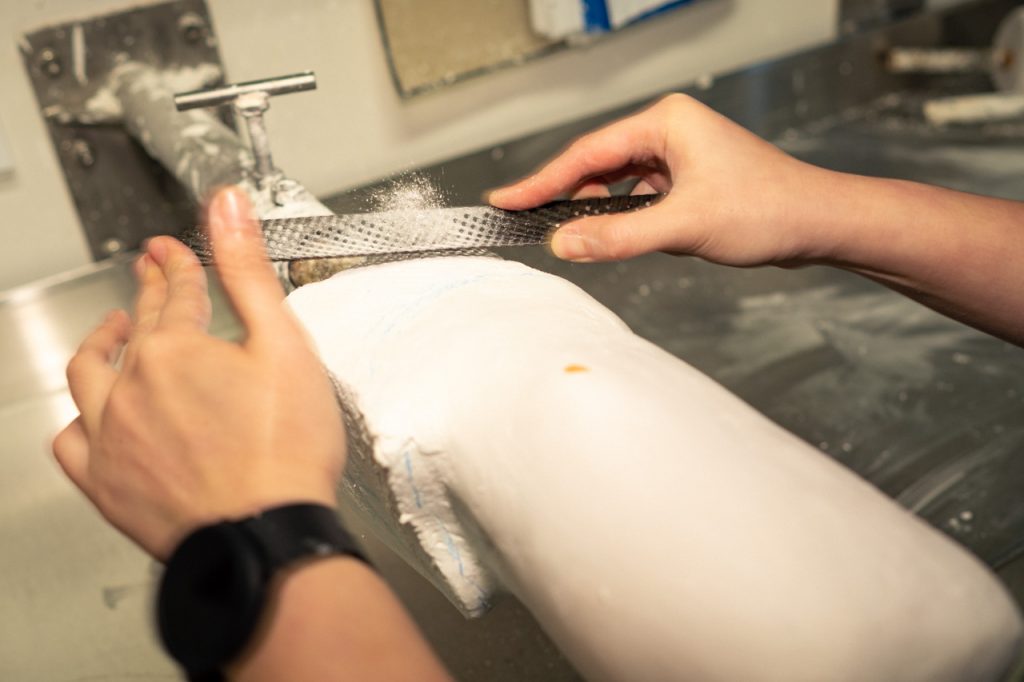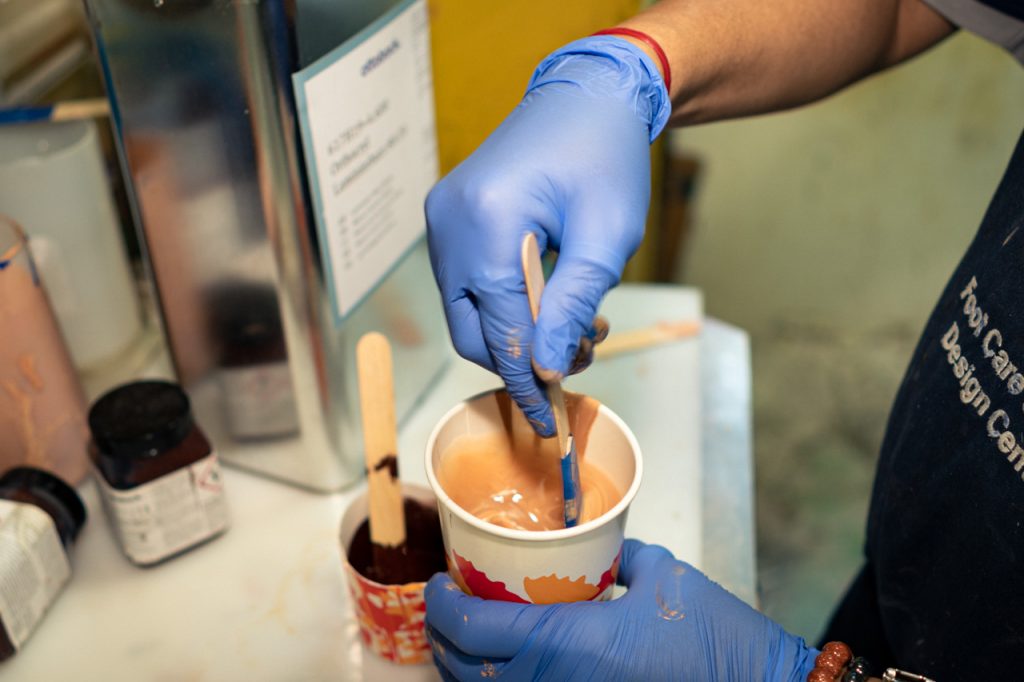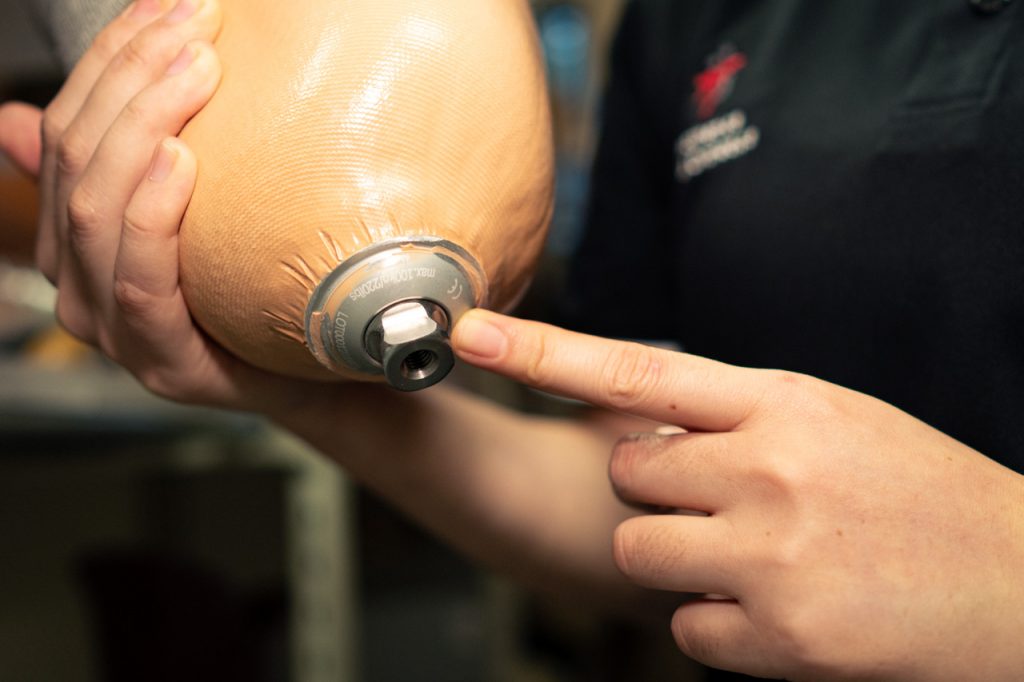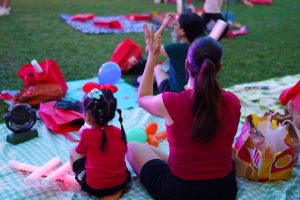All images by Stephanie Lee for RICE Media
Xin Ting was 11 years old when she found out, through an annual health screening in primary school, that her spine was curved sideways. It was scoliosis.
She was referred to the hospital for further examination—an experience she would later describe as “scary and uncomfortable”.
“The doctor told me I needed to wear a torso brace to correct my spine. Otherwise, I might have to undergo surgery if the curve worsened,” she recalls.
Like anyone around that age, the young Xin Ting cared greatly about her physical image. She didn’t want a scoliosis brace tucking below her arms down to the hip for nearly 20 hours a day. Not to mention how she’d stick out like a sore thumb.
Yet the thought of needing an operation was more frightening. The discomfort grew when Xin Ting underwent a daunting process to get her scoliosis brace made.
Xin Ting and her mother were brought to an extremely tiny room by three healthcare professionals. Who they were and what they were about to do, they did not explain.
“I was told to wear only my undergarments so they could surround my body with wet, cold, and sticky plaster to cast out the brace,” Xin Ting continues. “Nobody told me what was going on. So, I felt really lost. It was very stressful for a young girl.”
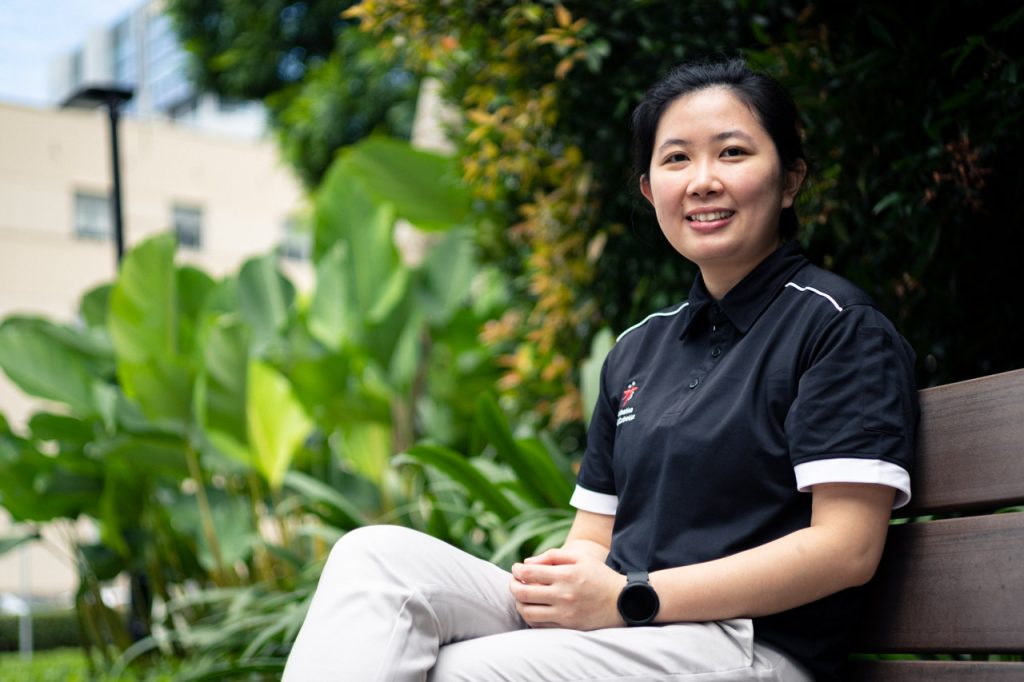
Though unpleasant, Xin Ting believes the experience made enough of an impact for her to pursue a career in the healthcare sector.
It’s P&O, Not the Piano
Today, Xin Ting is a Prosthetist & Orthotist (P&O) at Tan Tock Seng Hospital. And she never fails to be tactful and empathetic towards her patients’ emotions.
She is part of a highly specialised healthcare profession that oversees the making of artificial limbs (prostheses) for patients with limb loss, as well as customised braces and splints (orthoses) that support the limbs and spine.
Part of the process involves making sure her patients understand and are mentally prepared for the prosthetic and orthotic procedures that are about to come. No one else should be as confused and scared as she was during her scoliosis bracing experience.
“Many patients who come to my clinic have already undergone an amputation or lost part of their body function. So, their morale is low,” Xin Ting explains. “I find that it helps by drawing upon my own experience as a patient and being more sensitive towards their needs.”
However, the skills and job scope of P&O are little known. The occupation is so unconventional that they are often mistaken for technicians or salespeople rather than healthcare professionals.
Xin Ting remembers how amusing it was meeting her very first patient, who required a knee brace. She had just returned to Singapore after completing a Master in Clinical Prosthetics and Orthotics in Australia.
“I told him ‘I am Xin Ting, and I am your P&O.’”
“The patient replied, ‘Oh, you play the piano? Great, I play the guitar, maybe we should jam.” It took Xin Ting some time (and a good laugh) to establish to the patient who she was.
Due to the lack of understanding, Xin Ting adds, most people tend to associate P&Os with the specific tasks that they perform.
As patients come into the P&O clinic for regular maintenance of their customised devices, they’re sometimes seen as technicians who magically fix an issue.
Other times, P&O may even be mistaken for salespeople. Eddie Yang, Senior P&O at Khoo Teck Puat Hospital, notes that this misconception stems from how bespoke devices aren’t always the most suitable option for all medical conditions. Often, for acute conditions like fractures or ligament injuries, a properly prescribed and fitted off-the-shelf brace can be just as effective.
“As such, patients may think we are just ‘selling’ them a device and there is no difference from walking into a shop and getting one.”
When Healthcare Meets Engineering
In reality, P&Os don’t make such decisions out of thin air. Each prosthesis and orthosis is individually designed and prescribed.
Patients’ living environment, activity patterns, and comfort levels are part of a myriad of factors that P&Os take into consideration when choosing or designing devices for patients. After all, some devices might be worn for the rest of their life.
The choice and thickness of materials used to construct the P&O devices affects their durability and function. In this case, the P&O will have to pay attention to patients’ physique and activity levels.
For instance, patients who are more active or who have rigorous occupational demands require stronger prosthetic components made of carbon fibre, which are capable of withstanding high forces. Other patients may require special features built into their prosthesis such as shock absorbers or weather-proofing.

At the front end, P&Os conduct consultations and assess patients. They either capture the shape of the patient’s limbs using plaster or through digital scans to take exact measurements and design suitable devices for patients.
At the back end, they work closely with Prosthetic and Orthotic Technicians to create practical devices based on the obtained information. If anything, P&O is a unique combination of healthcare and engineering.
Interestingly, Eddie’s father is also a P&O, who has been in the profession for nearly three decades. But it was something that Eddie never had any particular interest in.
“I saw it like any other occupation that my friends’ fathers are doing,” he laughs.
Intrigued by how engineering concepts apply to everyday lives, Eddie originally wanted to be a mechanical engineer. It took a documentary on the Paralympics and the making of sports prosthetics to change his mind.
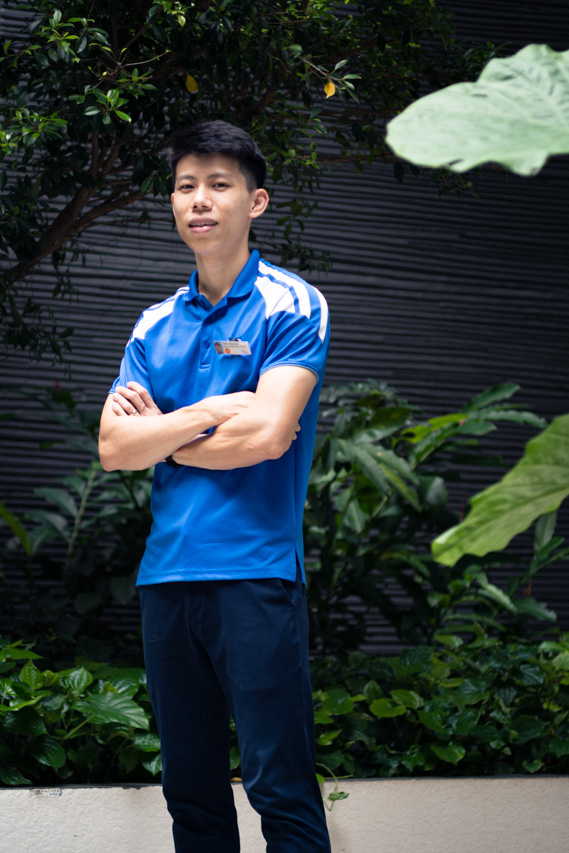
The engineering side of things—the modular part-swapping and fine-tuning that go into human prosthetics—proved to be eye-opening. Then there were the stories of Paralympic athletes: Inspirational individuals who commit to pushing past the limits despite their physical constraints.
Eddie was moved by the potential behind building devices that could not only replace limbs but also improve an individual’s performance and life.
“And then my dad steps in and says, ‘If you are fascinated by this, you should look at P&O’,” Eddie recalls.
He proceeded to have a long conversation with his father. Before long, Eddie gave up his spot to study engineering at the National University of Singapore and went over to the UK to pursue P&O.
Life After Limb Loss
As for Xin Ting, she has always enjoyed helping others. In a way, she knew that she would enter the healthcare sector one day.
Her past experience with scoliosis bracing eventually led her to settle on P&O.
“At first, I felt P&O was a perfect match with my past experience and my love for hands-on activities like baking,” Xin Ting offers. “I didn’t know I could have such an impact on people’s lives until I met this particular patient.”
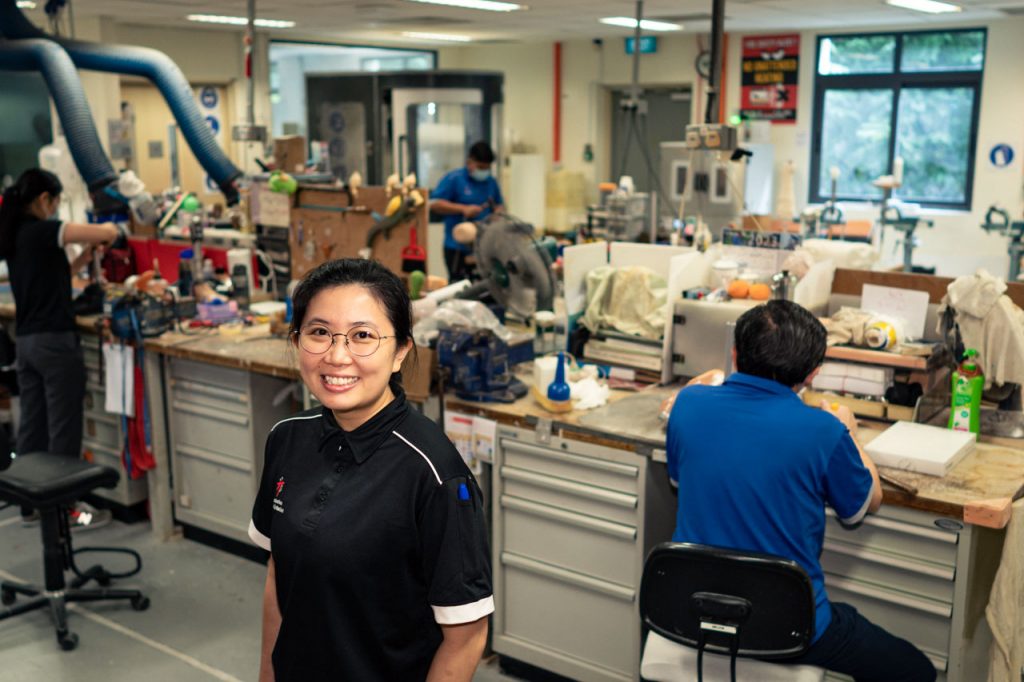
“He was one of my first few patients and was in his 40s when he met with an accident that resulted in his leg having to be amputated. He lost his job soon after. He also needed his wife’s help to move around the house and use the bathroom,” Xin Ting remembers.
The patient regarded himself as a burden and became extremely worried about his family and future. He was so lost and overwhelmed that he broke down in Xin Ting’s clinic.
She tried to ignite some hope in the patient by asking him to focus on what he wanted to achieve after getting his artificial limb.
Gradually, Xin Ting guided the patient in the fitting of the prosthesis and taught him how to walk again with the help of a physiotherapist. Many months later, the man walked into Xin Ting’s clinic, holding the hand of his toddler daughter.
This time, with a big smile on his face.
“He told me he had found a new job and life wasn’t as gloomy as before,” Xin Ting continues. “I felt so happy for him. It was at that moment I realised how life-changing my job could be.”
A Helping Hand
Right now, there is no higher education body in Singapore that offers P&O-related courses. Typically, those who are interested in the field will have to pursue their studies at accredited universities in the UK or Australia.
It’s what both Eddie and Xin Ting have done.
They believe they wouldn’t have been able to do so without the Healthcare Merit Award, a scholarship from MOH Holdings (MOHH).
“The scholarship relieved us from our financial burden,” says Xin Ting, who completed her undergraduate P&O studies at La Trobe University in Melbourne.
“It also gave us many opportunities to gain clinical experiences and connect with people already working in the field. Basically, a headstart into the career.”
Eddie, who studied at Strathclyde University in the UK, adds that the Healthcare Merit Award changed his perception of scholarships.
In general, most scholarships tend to focus on one’s academic merit. The healthcare scholarship by MOHH, on the other hand, assesses applicants as a person and their commitment to contribute to the public healthcare sector.
“I won’t say that this is just ‘another scholarship’,” Eddie says. “It’s managed by a group of people who care about your professional development and wish to nurture you to be the next generation of healthcare professionals.”
Xin Ting is glad that there are many efforts to raise awareness of the P&O profession. For one, MOHH is hosting information sessions for those who are curious about the field or the scholarship. They are also actively depicting P&O students’ lives overseas.
“I used to think P&O and the whole idea of living overseas for four years on my own were very scary. But as time went by, I realised nobody succeeds without a challenge.”
At the very least, Xin Ting believes that the journey strengthened her will to take that first step into the unfamiliar and just go for it—the very same process that many of her patients undergo with their first prosthesis.
“So don’t ever let your initial fear hold you back on what you want to do.”

